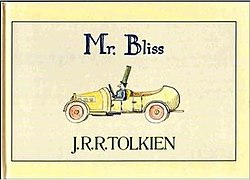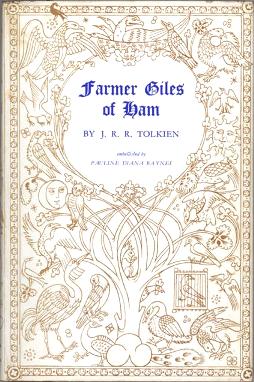
Farmer Giles of Ham is a comic medieval fable written by J. R. R. Tolkien in 1937 and published in 1949. The story describes the encounters between Farmer Giles and a wily dragon named Chrysophylax, and how Giles manages to use these to rise from humble beginnings to rival the king of the land. It is cheerfully anachronistic and light-hearted, set in Britain in an imaginary period of the Dark Ages. It features mythical creatures, medieval knights, and primitive firearms.
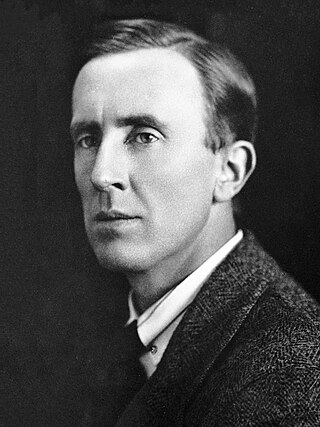
John Ronald Reuel Tolkien was an English writer and philologist. He was the author of the high fantasy works The Hobbit and The Lord of the Rings.
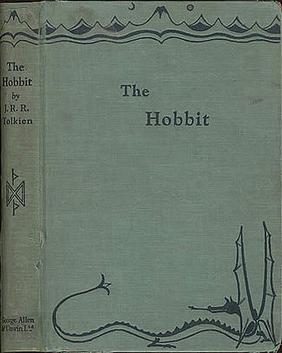
The Hobbit, or There and Back Again is a children's fantasy novel by the English author J. R. R. Tolkien. It was published in 1937 to wide critical acclaim, being nominated for the Carnegie Medal and awarded a prize from the New York Herald Tribune for best juvenile fiction. The book is recognized as a classic in children's literature and is one of the best-selling books of all time, with over 100 million copies sold.

Christopher John Reuel Tolkien was an English and naturalised French academic editor. The son of the author and academic J. R. R. Tolkien, Christopher edited 24 volumes of his father's posthumously published work, including The Silmarillion and the 12-volume series The History of Middle-Earth, a task that took 45 years. He also drew the original maps for his father's fantasy novel The Lord of the Rings.

Bag End is the underground dwelling of the Hobbits Bilbo and Frodo Baggins in J. R. R. Tolkien's fantasy novels The Hobbit and The Lord of the Rings. From there, both Bilbo and Frodo set out on their adventures, and both return there, for a while. As such, Bag End represents the familiar, safe, comfortable place which is the antithesis of the dangerous places that they visit. It forms one end of the main story arcs in the novels, and since the Hobbits return there, it also forms an end point in the story circle in each case.
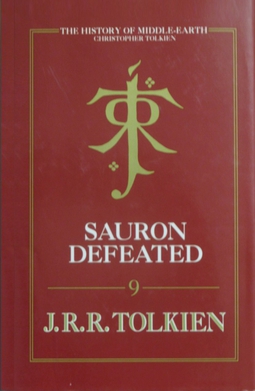
The History of Middle-earth is a 12-volume series of books published between 1983 and 1996 by George Allen & Unwin in the UK and by Houghton Mifflin in the US. They collect and analyse much of J. R. R. Tolkien's legendarium, compiled and edited by his son Christopher Tolkien. The series shows the development over time of Tolkien's conception of Middle-earth as a fictional place with its own peoples, languages, and history, from his earliest notions of "a mythology for England" through to the development of the stories that make up The Silmarillion and The Lord of the Rings. It is not a "history of Middle-earth" in the sense of being a chronicle of events in Middle-earth written from an in-universe perspective; it is instead an out-of-universe history of Tolkien's creative process. In 2000, the twelve volumes were republished in three limited edition omnibus volumes. Non-deluxe editions of the three volumes were published in 2002.

Pauline Diana Baynes was an English illustrator, author, and commercial artist. She contributed drawings and paintings to more than 200 books, mostly in the children's genre. She was the first illustrator of some of J. R. R. Tolkien's minor works, including Farmer Giles of Ham, Smith of Wootton Major, and The Adventures of Tom Bombadil. She became well-known for her cover illustrations for The Hobbit and The Lord of the Rings, and for her poster map with inset illustrations, A Map of Middle-earth. She illustrated all seven volumes of C. S. Lewis's Chronicles of Narnia, from the first book, The Lion, the Witch and the Wardrobe. Gaining a reputation as the "Narnia artist", she illustratred spinoffs like Brian Sibley's The Land of Narnia. In addition to work for other authors, including illustrating Roger Lancelyn Green's The Tales of Troy and Iona and Peter Opie's books of nursery rhymes, Baynes created some 600 illustrations for Grant Uden's A Dictionary of Chivalry, for which she won the Kate Greenaway Medal. Late in her life she began to write and illustrate her own books, with animal or Biblical themes.
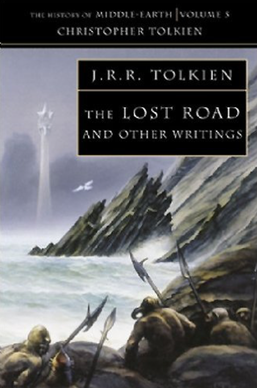
The Lost Road and Other Writings – Language and Legend before 'The Lord of the Rings' is the fifth volume, published in 1987, of The History of Middle-earth, a series of compilations of drafts and essays written by J. R. R. Tolkien in around 1936–1937. It was edited and published posthumously by his son Christopher.
The Notion Club Papers is an abandoned novel by J. R. R. Tolkien, written in 1945 and published posthumously in Sauron Defeated, the 9th volume of The History of Middle-earth. It is a time travel story, written while The Lord of the Rings was being developed. The Notion Club is a fictionalization of Tolkien's own such club, the Inklings. Tolkien's mechanism for the exploration of time is through lucid dreams. These allow club members to experience events as far back as the destruction of the Atlantis-like island of Númenor, as narrated in The Silmarillion.
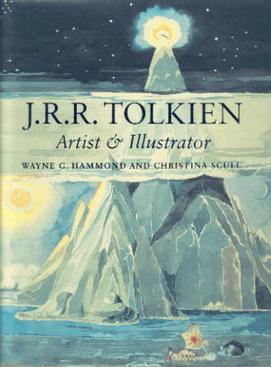
J. R. R. Tolkien: Artist and Illustrator is a collection of paintings and drawings by J. R. R. Tolkien for his stories, published posthumously in 1995. The book was edited by Wayne G. Hammond and Christina Scull. It won the 1996 Mythopoeic Scholarship Award for Inklings Studies. The nature and importance of Tolkien's artwork is discussed.
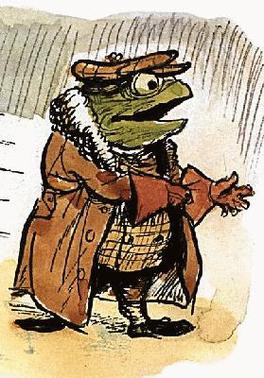
Mr. Toad, of Toad Hall, is one of the main characters in the 1908 novel The Wind in the Willows by Kenneth Grahame.

This is a list of all the published works of the English writer and philologist J. R. R. Tolkien. Tolkien's works were published before and after his death.

The Tolkien Society is an educational charity and literary society devoted to the study and promotion of the life and works of the author and academic J. R. R. Tolkien.

Tolkien: Maker of Middle-earth is a 2018 art book exploring images of the artwork, illustrations, maps, letters and manuscripts of J. R. R. Tolkien. The book was written by Catherine McIlwaine, Tolkien archivist at the Bodleian Library, Oxford. It was timed to coincide with an exhibition of the same name, also curated by McIlwaine.

Trees play multiple roles in J. R. R. Tolkien's fantasy world of Middle-earth, some such as Old Man Willow indeed serving as characters in the plot. Both for Tolkien personally, and in his Middle-earth writings, caring about trees really mattered. Indeed, the Tolkien scholar Matthew Dickerson wrote "It would be difficult to overestimate the importance of trees in the writings of J. R. R. Tolkien."

Tolkien's artwork was a key element of his creativity from the time when he began to write fiction. A professional philologist, J. R. R. Tolkien prepared a wide variety of materials to support his fiction, including illustrations for his Middle-earth fantasy books, facsimile artefacts, more or less "picturesque" maps, calligraphy, and sketches and paintings from life. Some of his artworks combined several of these elements.
"The Shadow of the Past" is the second chapter of J. R. R. Tolkien's bestselling fantasy work, The Lord of the Rings, which was published in 1954–1955. Tolkien called it "the crucial chapter"; the Tolkien scholar Tom Shippey labelled it "the vital chapter". This is because it represents both the moment that Tolkien devised the central plot of the book, and the point in the story where the protagonist, Frodo Baggins, and the reader realise that there will be a quest to destroy the Ring. A sketch of it was among the first parts of the book to be written, early in 1938; later that year, it was one of three chapters of the book that he drafted. In 1944, he returned to the chapter, adding descriptions of Gollum, the Ring, and the hunt for Gollum.
The philologist and author J. R. R. Tolkien set out to explore time travel and distortions in the passage of time in his fiction in a variety of ways. The passage of time in The Lord of the Rings is uneven, seeming to run at differing speeds in the realms of Men and of Elves. In this, Tolkien was following medieval tradition in which time proceeds differently in Elfland. The whole work, too, following the theory he spelt out in his essay "On Fairy-Stories", is meant to transport the reader into another time. He built a process of decline and fall in Middle-earth into the story, echoing the sense of impending destruction of Norse mythology. The Elves attempt to delay this decline as far as possible in their realms of Rivendell and Lothlórien, using their Rings of Power to slow the passage of time. Elvish time, in The Lord of the Rings as in the medieval Thomas the Rhymer and the Danish Elvehøj, presents apparent contradictions. Both the story itself and scholarly interpretations offer varying attempts to resolve these; time may be flowing faster or more slowly, or perceptions may differ.
J. R. R. Tolkien used frame stories throughout his Middle-earth writings, especially his legendarium, to make the works resemble a genuine mythology written and edited by many hands over a long period of time. He described in detail how his fictional characters wrote their books and transmitted them to others, and showed how later in-universe editors annotated the material.
The architecture in Middle-earth, J. R. R. Tolkien's fictional world, is as varied as the Hobbit-holes of the Shire, the tree-houses of Lothlórien, the wooden halls of Rohan, and the stone dwellings and fortifications of Minas Tirith, capital of Gondor. Tolkien uses the architecture in each place, including its interior design, to provide clues to each people's character. The Hobbit Bilbo Baggins's cosy home, Bag End, described in his 1937 children's book The Hobbit, establishes the character of Hobbits as averse to travelling outside the Shire. In his fantasy novel The Lord of the Rings, Lothlórien demonstrates the close integration of the Elves with their natural environment. The King of Rohan's hall, Meduseld, indicates the Rohirrim's affinity with Anglo-Saxon culture, while Gondor's tall and beautiful stone architecture was described by Tolkien as "Byzantine". In contrast, the Dark Lord Sauron and the fallen Wizard Saruman's realms are damaged lands around tall dark towers.
